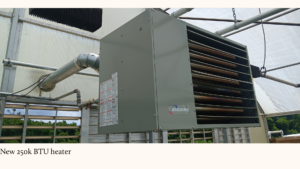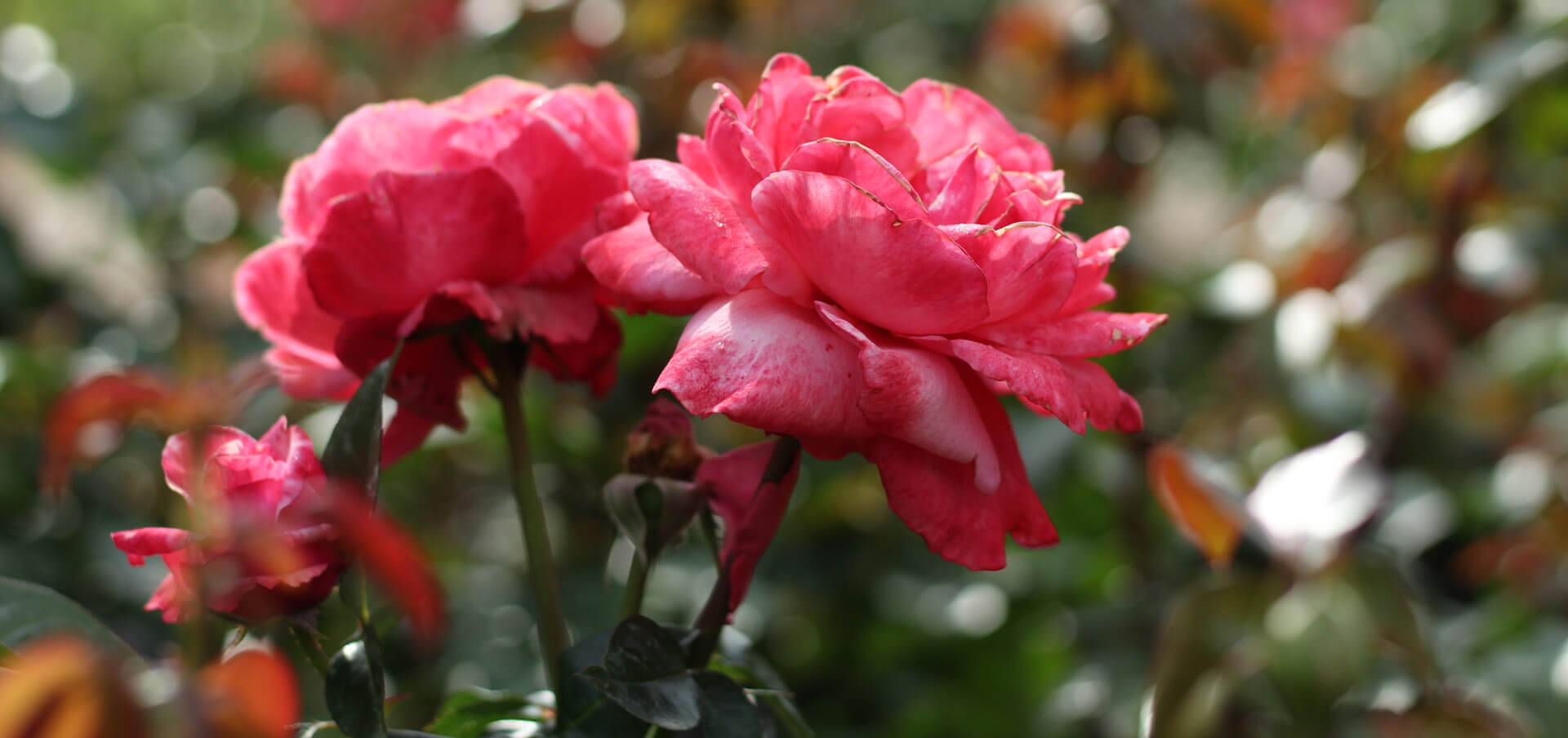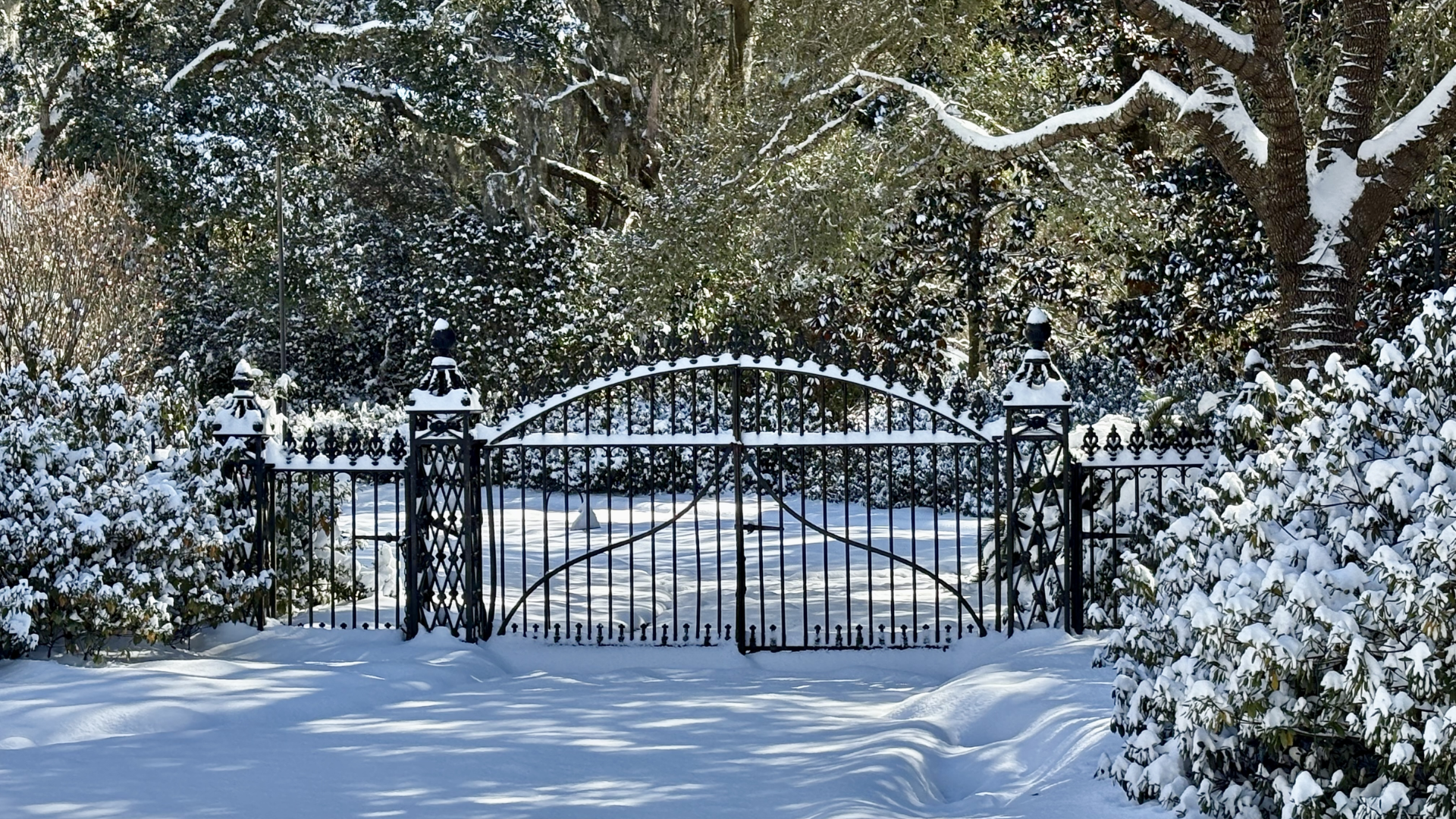It’s almost 100 degrees, and we’re 100 days from our next 32-degree night. So why are we installing greenhouse heaters in July? Glad you asked. Only 164 days have passed from our record-breaking January snowstorm until the 4th of July. So as crazy as it seems to be installing greenhouse heaters in July, at least we can all agree, “winter is coming.”
The greenhouses at Bellingrath Gardens and Home have bolstered our immense botanical displays since Walter and Bessie opened the doors to welcome the public almost a century ago. Our greenhouses are a critical behind-the-scenes component of the gardens. In addition to the production of bedding plants, we depend on our greenhouses to perpetuate a huge collection of stock plants used for propagation and research, and to accommodate rotational displays of specimen plants. Even this far south, year-round greenhouse operation depends on the input of heat when long nights are colder than what is adequate to grow crops. Nearly every plant destined for a charmed spot in Bellingrath Gardens will essentially cease to function metabolically (they stop growing) below 55 degrees, potentially causing the greenhouse team to miss production deadlines. Furthermore, essentially every plant under glass will be severely damaged or killed if the temperature inside our greenhouse drops below freezing even for a minute.
Bellingrath’s conservatory and greenhouse space has been heated to accommodate year-round operation since the 1930’s. In the 1960’s, a huge boiler was installed to generate steam in advance of greenhouse construction on the site where our operations continue today.
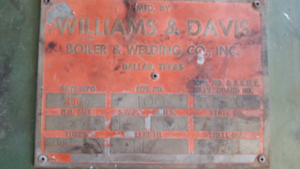
Transported by a myriad of iron pipes from the boiler, the heat from pressurized steam radiated from metal fins to heat concrete benches and the air inside a dozen greenhouses to ensure our plants all had comfortably heated seats. Like so many critical installations of the early- to mid-20th century at Bellingrath Gardens and Home, our greenhouse boiler was the top of the line choice for its time. And for half a century, a boiler system worked behind the scenes to enable the production of several million potted plants. In fact, the boiler was so large and successful, we continued to expand the greenhouse complex around it into the 1990’s—the boiler heating almost one acre.
Radiant heating of greenhouses was the industry standard from the 1880’s through the 1970’s. For many reasons (mostly cost-related), smaller gas heater units have replaced massive boiler systems. No matter how grandiose, no matter how well-built and installed, no matter how strategically utilized, no matter how immune to obsolescence, and regardless of maintenance—machines, systems, tools, infrastructure—they all wear out eventually. In 2020, Executive Director Todd Lasseigne recognized an immediate need to upgrade our greenhouse heating system. The choice: each year, continue to throw away about $10k in repairs, while enduring cold and sleepless nights wondering if the system had failed yet…OR…uncomfortably stretch the budget for the next five years by spending over $150k to purchase and install 15 new gas heaters, after running a quarter mile of gas lines. More rust than iron, more headaches than dependability, more repair bills than made sense, the boiler system was decommissioned.
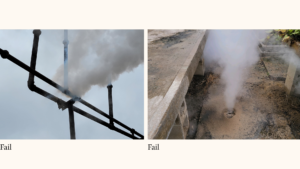
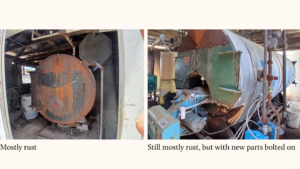
The final five heaters are being installed as I type this—another chapter written in support of the Bellingrath’s continuing legacy. Certainly, greenhouse heating infrastructure changeouts aren’t the sexiest thing to write about; but our latest achievement is just another part of being good stewards of this magical place. Winter is coming, and we are prepared.
